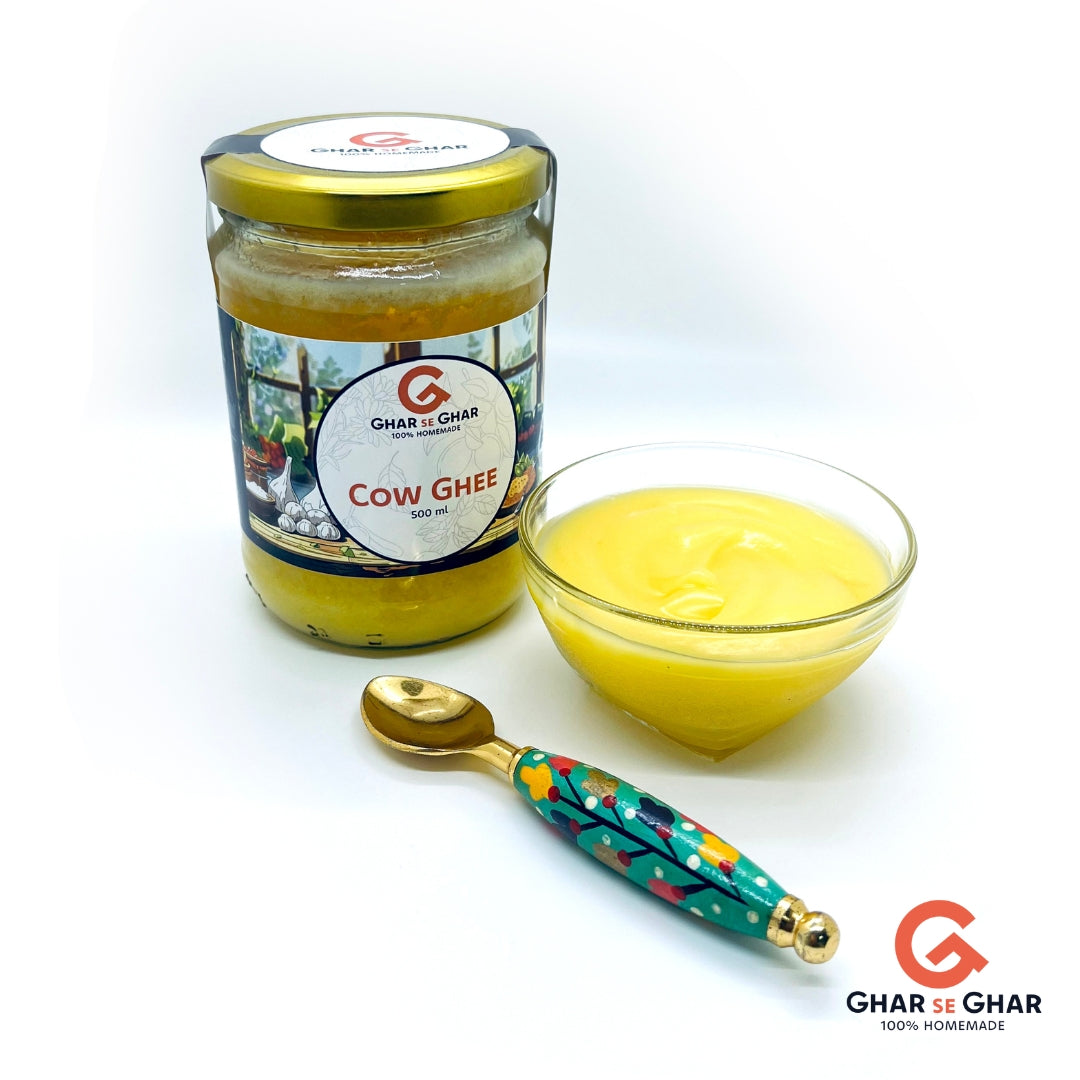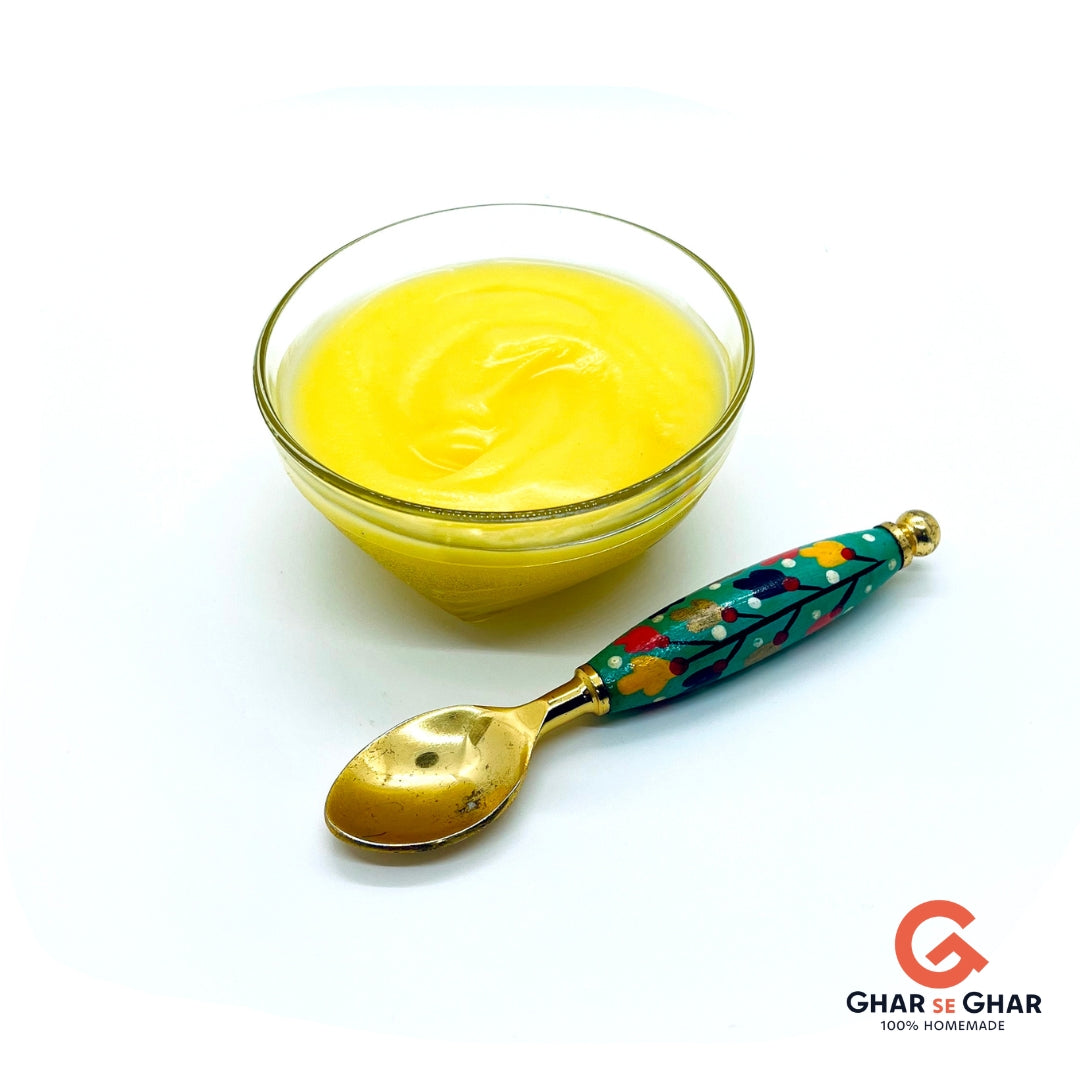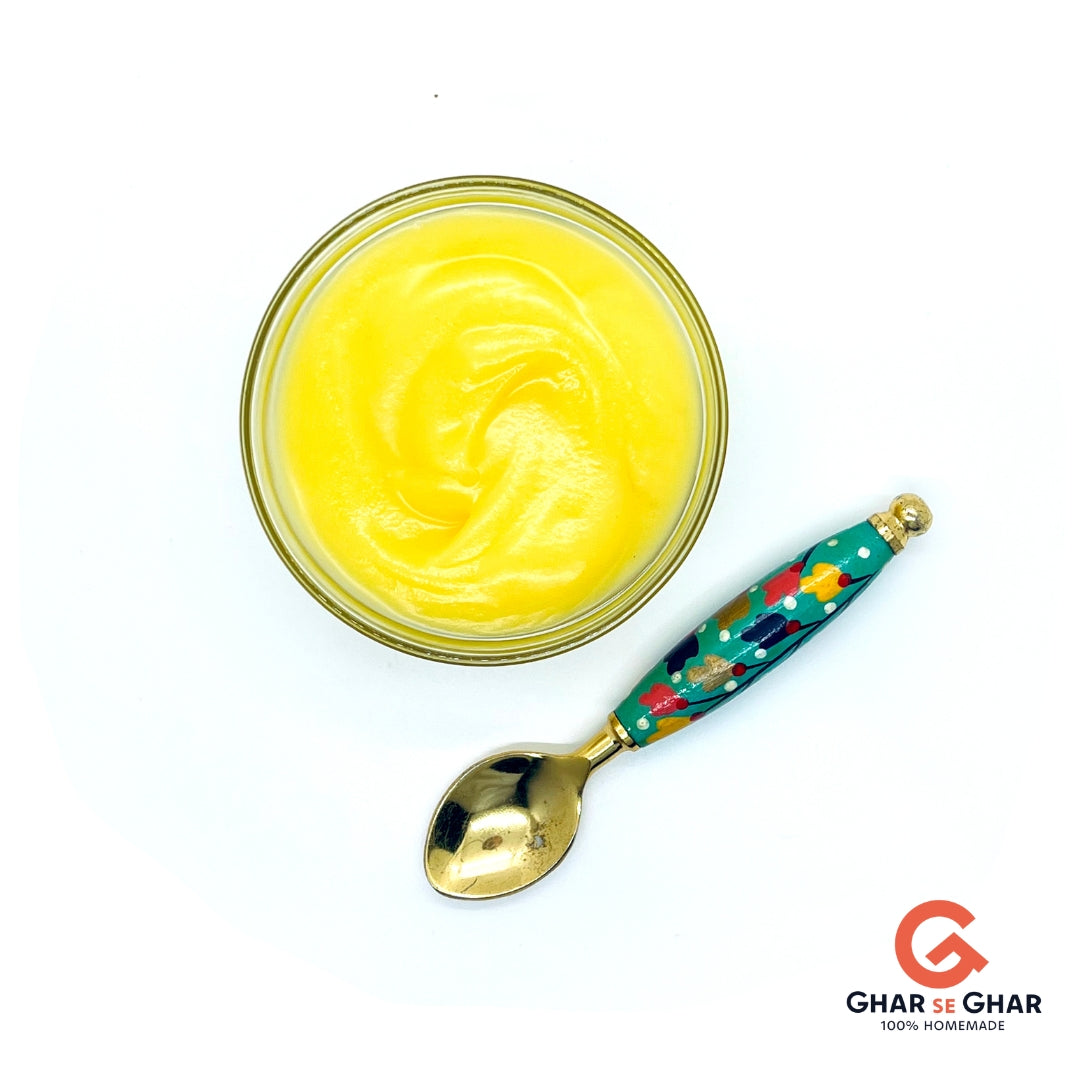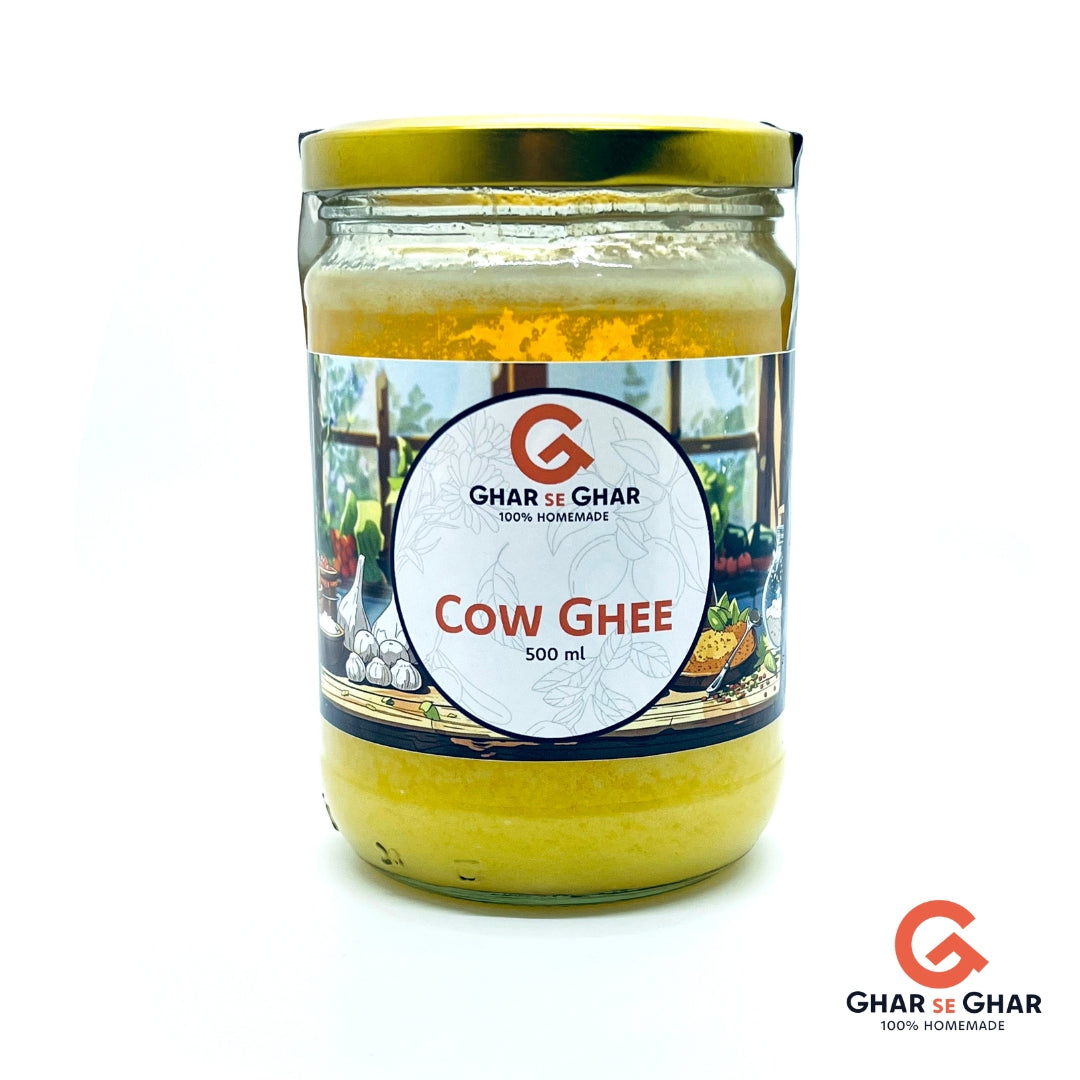Homemade Cow Ghee Process
The process, by convention, involves the boiling of milk, conversion of that into curd, churning the curd into butter, and then heating that butter in a vessel with a heavy bottom. Heating evaporates water and removes milk solids, yielding pure, golden clarified fat.
Composition
Ghee is about 99-99.5% pure milk fat, chiefly consisting of saturated fats and monounsaturated fatty acids. For all practical purposes, it is lactose- and casein-free and, hence, more easily digestible. It contains fat-soluble vitamins such as A, D, E, and K, and short-chain fatty acids, especially butyric acid.
Texture and Flavor
Pure Cow Ghee has a distinctive nutty, slightly sweet, and rich dairy flavor. Generally, when at cooler temperatures or in
solidified states, it is granular or grainy in texture, which may be taken as a sure sign of purity. When warm, it is a clear, golden liquid with a pleasing aroma.
Shelf life
Due to the very low moisture content, Pure Cow Ghee has a very good shelf life. Under proper storage in an airtight jar, away
from direct sunlight and moisture, it can last 6 to 12 months at room temperature and can stay fresh for an even longer period when refrigerated.
Nutritional Values (Per 100g)
Homemade pure cow ghee is a highly concentrated source of fat, with practically all its energy given by lipids; hence, it is high in calories. The process also separates almost all proteins,
carbohydrates, and moisture from the ghee, really leaving just pure fat and fat-soluble micronutrients behind. The values vary slightly depending on the diet of the cow-for example, grass-fed versus conventional-and the method of preparation, but this is generally indicative of the profile.
Nutrient
Approximate Amount Per 100g
Total Fat ~99.5 - 100 g
Saturated Fatty Acids (SFA) ~60 - 65 g
Monounsaturated Fatty Acids (MUFA) ~25 - 30 g
Polyunsaturated Fatty Acids (PUFA) ~3 - 5 g
Trace amounts (often - 0 g)
Cholesterol ~250 - 290 mg
Energy ~870 - 900 kcal
Protein & Carbohydrates 0 g (Trace amounts may remain)
Butyric Acid (a Short-Chain SFA)
Vitamins (A, DE, K) Present in high amounts (fat-soluble)
Total Fat- The total fat content within Pure Cow Ghee is
very high, approximately 99.5% to 100%. This shows that it has one of the most concentrated sources of dietary fat. This high-fat composition accounts for its long shelf life and high smoke point. This makes it very suitable for traditional Indian cooking methods such as deep-frying and sautéing without having the oil break down.
Saturated Fatty Acids (SFA)
The main part of its fat profile is made up of Saturated Fatty Acids, making up around 60-65g per 100g. Importantly, this
fraction contains the valuable short-chain fatty acids, among which Butyric Acid is recognized as one of the most important. Butyric acid is highly valued under Ayurveda and by contemporary science for maintaining the colonocytes-the
cells of the colon-and gut health in general. In fact, what sets ghee apart from most other animal fats is its unique combination of SCFAs and longer-chain
SFAs.
Monounsaturated Fatty Acids (MUFA)
Monounsaturated Fatty Acids are the second most
abundant fat, generally ranging from 25 to 30 grams per 100g. The dominant MUFA in ghee is Oleic Acid, the very same healthy fat found in olive oil. This component contributes to the stability of ghee and is often praised for its potential to support cardiovascular health when consumed in moderation as part
of a balanced diet.
Polyunsaturated Fatty Acids (PUFA)
The PUFA content is the lowest of the major fat
groups, at about 3 to 5 grams per 100g. This includes essential fatty acids such as Linoleic Acid (Omega-6) and Alpha-Linolenic Acid (Omega-3), which are often part of the highly beneficial compound Conjugated Linoleic Acid (CLA). Ghee produced from grass-fed cow milk is especially high in CLA, which is associated with various health benefits including enhancement of metabolism.
Trans Fatty Acids (TFA)
Compared with industrially processed fats, homemade Pure Cow Ghee contains only trace amounts, often 0 grams, of the
unhealthy industrial Trans Fatty Acids. However, it naturally contains a small amount of naturally occurring ruminant trans fat, like CLA, which is not considered harmful and may have health benefits. This low count of TFA is one of the major advantages over many commercially produced hydrogenated fats.
Cholesterol
Ghee is a dairy product and, just like butter, carries dietary cholesterol at approximately 250 to 290 milligrams per 100g.
Since a serving size is much less, about 10-15g or 1 tablespoon, the amount consumed per serving is moderate. For most healthy people, ghee's cholesterol has little to no effect on blood cholesterol levels, though individuals with a history of heart problems should consume the substance in moderation.



















